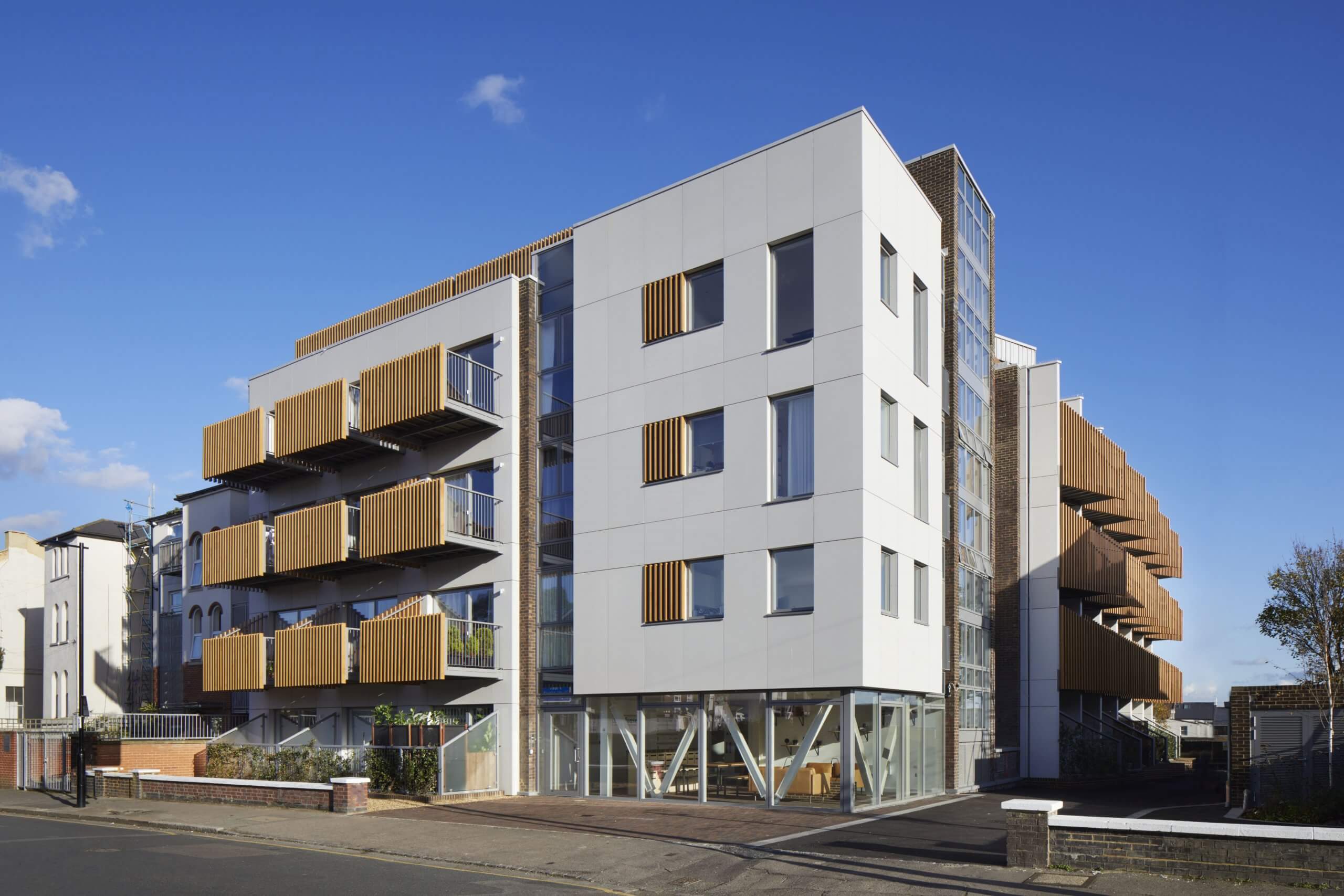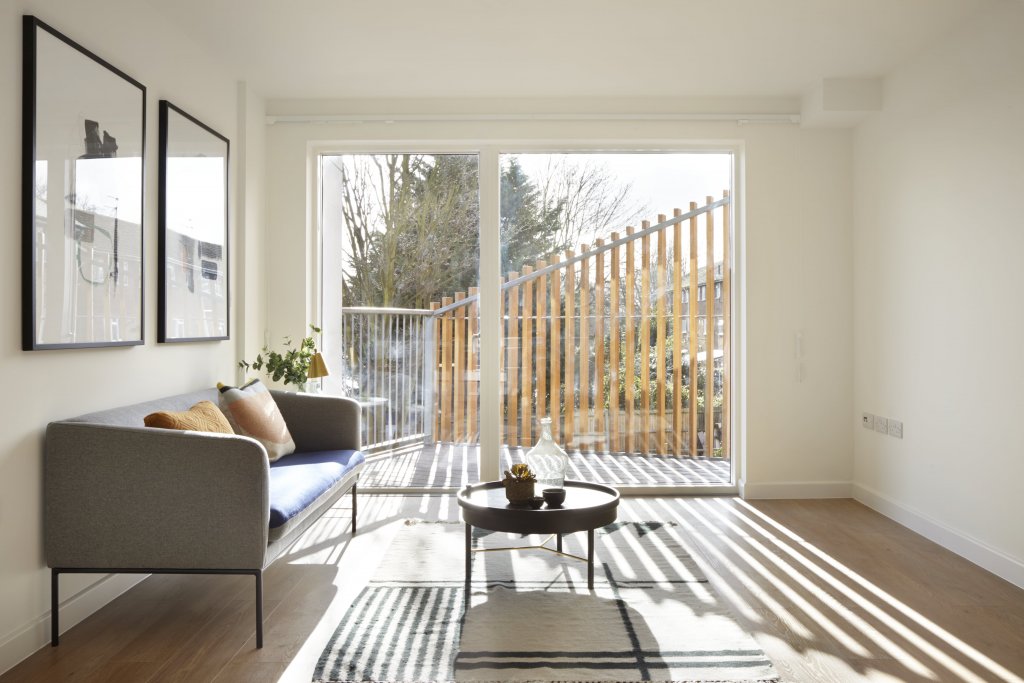Developer Joseph Homes approached alma-nac with the aim of converting the building into residential apartments under permitted development rights.
However, after reviewing the proposals, alma-nac suggested taking a more innovative approach. This meant not only renovating the existing building but also adding some new build elements to enhance the design.
Clever dual-aspect design
brings in the light
With its north/south aspect, a typical office to residential conversion would have been designed around a central corridor leading to apartments on either side, half of which would have been north-facing and dark.
Instead, alma-nac cleverly created 43 dual-aspect apartments within the building. With access to the apartments running along the north elevation, the one and two-bedroom homes are arranged in couplets with each one enjoying an angled south-facing balcony with a north-facing window on the other side.
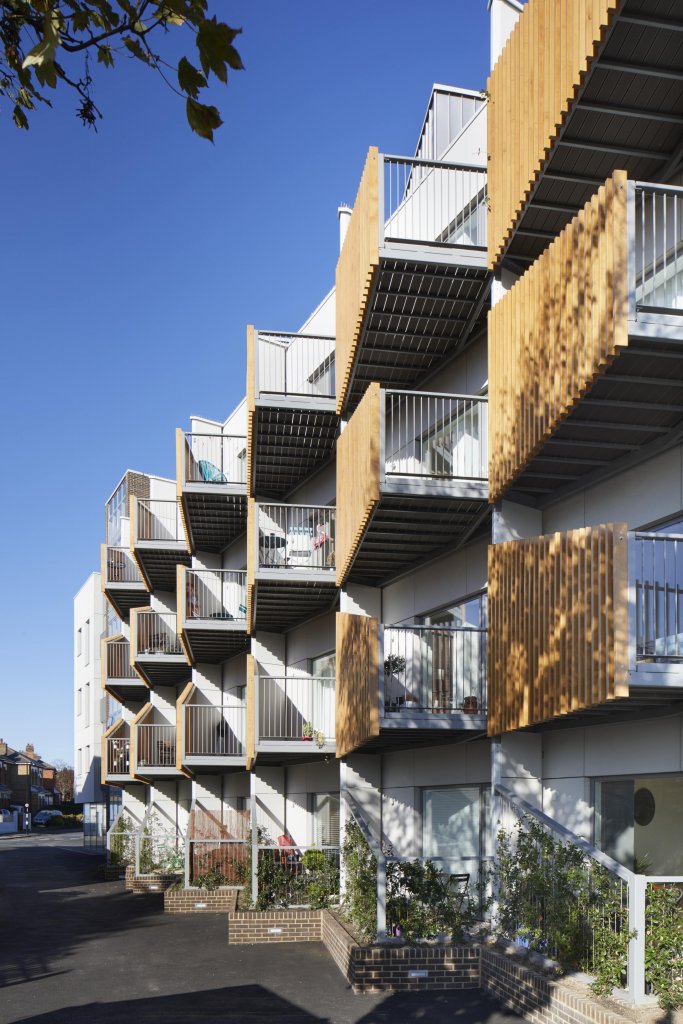
In addition, the building has a shared entrance hall, office space and roof-top garden. Together with the couplet design of the apartments, these shared amenities deliver not only a sense of community for the residents, but also provide an enhanced sense of space.
Archicad learning curve
leads to tremendous time savings
Paxton House set the precedent for how Graphisoft’s Archicad is used within alma-nac, as director Caspar Rodgers explains:
This was the first large-scale project that we designed using Archicad and we learnt a lot about the software and how we use it today. We worked very hard to set up a new workflow in the early days and now that we have an established process in place, the time savings are tremendous.
Working in 3D demonstrates
sense of space
The apartments at Paxton House are narrow, but due to clever design, appear both light and airy.

Photo by Jack Hobhouse 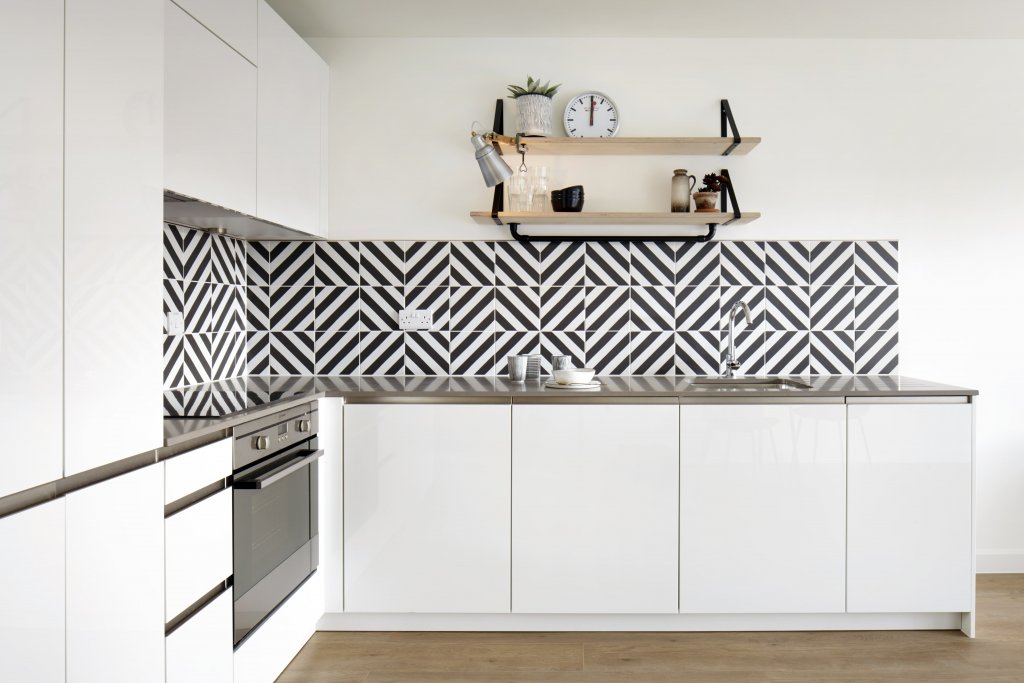
Photo by Jack Hobhouse 
Photo by Jack Hobhouse
alma-nac had considerable previous experience of working with very narrow spaces and had designed the well-known Slim House in 2012. The idea for Paxton House stemmed in part from that project, which had made such good use of a confined site.
By working in three dimensions from the initial stages of the project, the client could fully appreciate the sense of light, air and space within the apartments straight away.
Renovation filters
for early visualisations
alma-nac modelled the existing building in Archicad and then used the inbuilt renovation filters to model the renovations and the new build elements. Now, alma-nac frequently uses the renovation filters to show different options to clients at the early design stages, using the filter menu.
“Our client was very heavily involved throughout the design process, and by using the renovation filters they could easily visualise the design and see exactly which parts of the building were going, which would be retained and which were new,” says Caspar
“The power of Archicad’s renovation filters is endless. The advantage is that everything is saved in one file, and all elements are fully coordinated so there are no nasty clashes” continues Adam Shapland, associate at alma-nac
Sharing information early
with M&E and structural engineers
Paxton House had limited space for running heating, electrical and plumbing services to the apartments so alma-nac engaged very early with the M&E engineers to devise a workable solution. The space-saving result was that the apartment access along the north façade doubled as a route for the services which were fitted into the gantries.
Meanwhile, due to the complex nature of the design, the team also shared the structural information early on with the structural team.
The angled balconies are self-supporting and were pre-fabricated offsite. Specialist steelwork was also required. With the help of Archicad, we could export the data directly and talk through the model with the structural engineer and steelwork manufacturer in a clear fashion.
Caspar Rodgers
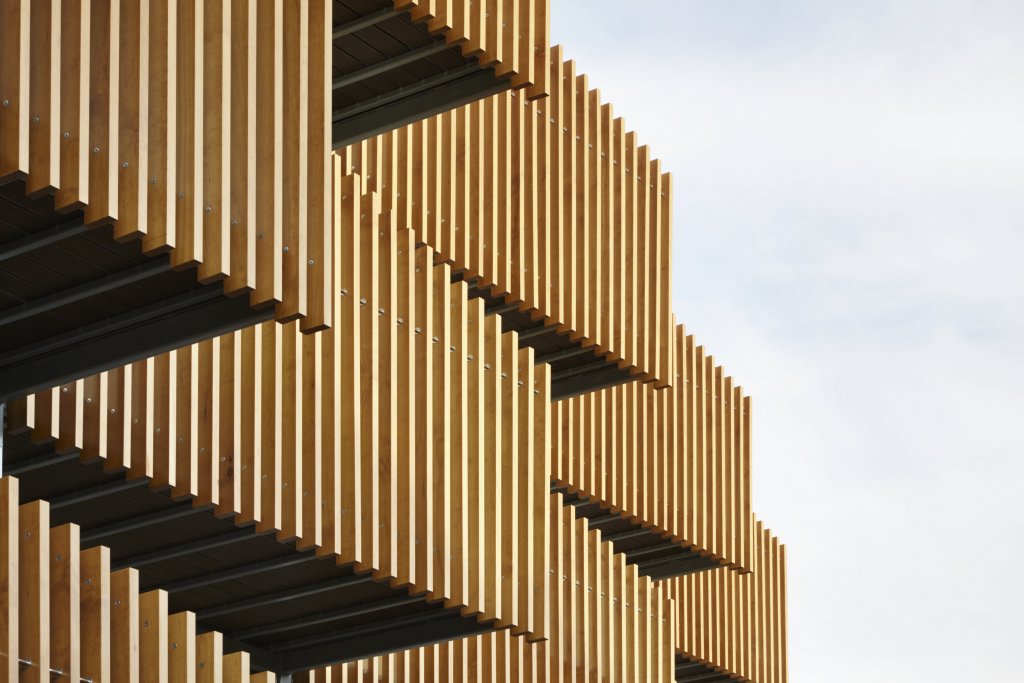
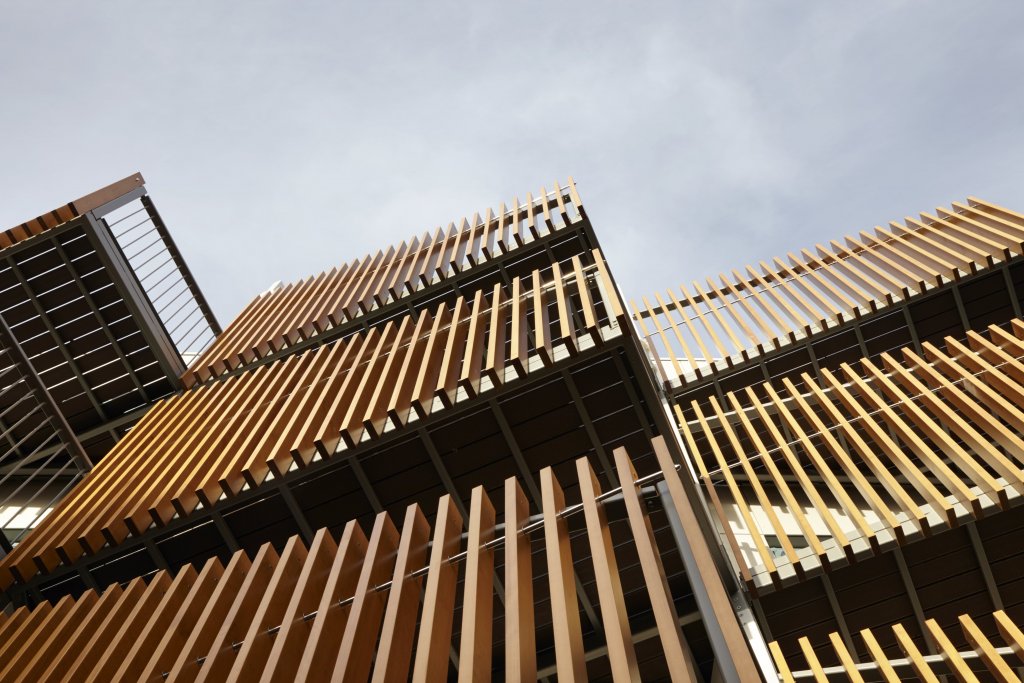
The structural engineers used Revit and it was the first time we had exported information from an Archicad model into IFC. Graphisoft’s helpdesk team in Nottingham was great – and helped us to set up the import and export of IFC files
Caspar Rodgers
Freeing up
more time for design
Whilst working on the design for Paxton House, alma-nac simultaneously set up new templates for the practice, so it took more effort at the start. However, the benefits came later in the project with improvements in efficiency and consistency.
“When you start to use new software, processes initially take longer. We developed our template from this project which is now very robust – and we use the same principles on all our projects. We now find it much quicker to work in 3D – especially when we’re renovating an existing building and modelling directly from a survey,” says Adam
The ability for the whole team to work on the same file, using a set template and project standards has been very beneficial to the practice. When designing Paxton House, alma-nac had multiple architects working on the project, designing the different apartments which were all coordinated into the single model.
Now that alma-nac is using BIM, we are much more efficient. It means that we have more time to spend on design. Archicad provides a level of automation that we can 100% rely on. It makes the design process much more efficient and leaves much more time for the fun stuff.
Adam Shapland

Awards:
- First Time Buyer Awards 2019 (Winner)
- Architects’ Journal Retrofit Awards 2018 (Winner)
- Housebuilder Awards 2018 (Finalist)
- Evening Standard New Homes Award 2018 (Highly Commended)
About alma-nac
Chris Bryant, Caspar Rodgers and Tristan Wigfall co-founded alma-nac in 2009. They describe their practice as driven by ‘collaboration and participation’ and ‘an appetite for experimentation’ with a ‘social agenda to broaden the remit and democratise the output of the profession’. The practice’s belief that ‘the environment is our only real priority going forward’, includes an impressive run of further clever retrofit projects, including the AJ Retrofit Award-winner Paxton House, the radical rework of an office block into flats.
About Graphisoft
Graphisoft® ignited the BIM revolution in 1984 with Archicad®, the industry first BIM software for architects. Graphisoft continues to lead the industry with innovative solutions such as its revolutionary BIMcloud®, the world’s first real-time BIM collaboration environment; and BIMx®, the world’s leading mobile app for lightweight access to BIM for non-professionals. Graphisoft is part of the Nemetschek Group.
